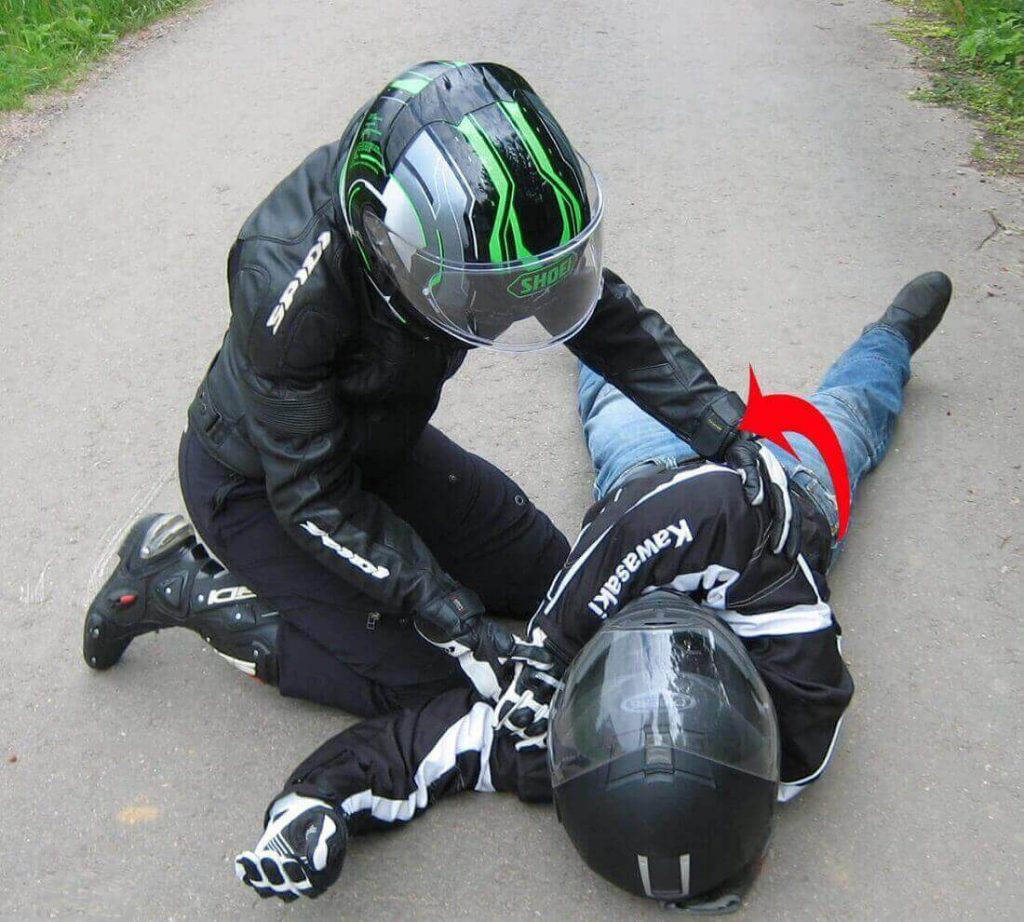Mark the place of accident
First you need to ensure the safety of the scene so that there are no new accidents, and people working in the accident are not injured.
If you are by car, you need to put it in front of the accident site, a little at an angle to the road – so that with a possible impact it will fly to the side of the road, and not to the oncoming lane. If you are on a motorcycle, you also need to put it a little diagonally: so it will be easier for drivers to identify it.
Put a warning sign in front of your car or motorcycle, and a little further away – another. This will give other drivers a margin of time to navigate: if someone does not notice the first sign, he sees the second, and if this does not help, he will fly into your car, but you will not suffer. When the accident occurred at a bend, a sign must be placed in front of it so that the turners could see it from afar.
Turn on the emergency gang and put on the warning light, if any. This will attract extra attention, especially in the dark. On motorcycles, you can squeeze the brake handle and fix it with tape or adhesive. This signal is much brighter than the side lights.
Wear a reflective vest to be noticed in the dark. The training center also recommends sewing a reflective strip on your trousers so that people passing by will see you, even if you are on your knees. Reflective dressings and bracelets can also be used.
Assess the situation and call an ambulance: clearly indicate the address, report that a motorcycle accident has occurred, indicate the number of victims and their approximate age.
Try to find witnesses – someone who could be with you at this time. You can stop the passing car and ask for it.

Assess the condition of the victim
When you come to the victim, you need to find out if he is conscious. Grasp the “chin” of the helmet, lock it and carefully lift the visor so that the head and the helmet do not move. It is not necessary to take off the helmet: a person can have a fracture of the cervical spine, and it can easily be hurt by inept actions.
Start talking. You can lightly touch your shoulders and ask: “What happened? Need help?” Continue talking with him: he is hurt and scared, and the presence of a person nearby calms him a little. Just do not say, as in the movie, that everything will be fine, because you can not guarantee this. You can say something like “we will try to help you, I called an ambulance, we must wait.”
Then you need to understand what is wrong with him. To do this, it must be felt. Just be sure to tell him what you are doing: “Let me feel you carefully. Does it hurt here?” Where it hurts, most likely a fracture, which is also felt when palpating. Then it’s better not to move the person again.
If there is bleeding, traces will remain on the gloves or you will hear a squelch. To stop the blood, you can hold a place with your hands above the wound or apply a bandage.
If the injured person is not hurt anywhere, but his head is spinning and darkens in his eyes, then he is losing consciousness. We need to ask him to put his hands under his helmet and roll over on his side. This is only possible if he has no fractures.
Remember what he says about his feelings: where it hurts, whether he feels limbs, whether his head is spinning – this information will help doctors if he loses consciousness upon their arrival.
The victim is unconscious – his eyes are closed, he does not answer questions – this is a dangerous situation. There are two options. First: still remove the helmet and throw his head back. But this must be done together and carefully, so if you have never tried it, do not try. Second: turn on its side. But with a fracture of the pelvis it is better not to move it. If you are not sure, do nothing.
In no case should:
• give smelling ammonia;
• feed with tablets: the usual painkillers do not help with pain from a fracture, but can block the respiratory centers, cause an allergic reaction;
• put a splint on the fracture: you have to move it, and this will intensify the pain;
• rinse the wounds – everything that could get there has already got there, and alcohol on the wound can lead to increased pain and loss of consciousness.
When the ambulance arrived
Tell the doctors that you called an ambulance. Tell what you found out when examining the victims. For example, this one said that he did not feel his legs, and this one – that his arm hurt. This will help doctors, especially if the victims have already lost consciousness.
Ask your doctors if you need one. If not, you can leave, just write down the number of the order first. This is useful if you have any questions. For example, one of the witnesses may say that it was you who shot down a motorcyclist and left the scene of an accident. If you know the number of the outfit (it can be used to find out the time of the call and the arrival of the ambulance), then you were there, waiting for the doctors.